Double demolition as Glasgow tower blocks are blown up
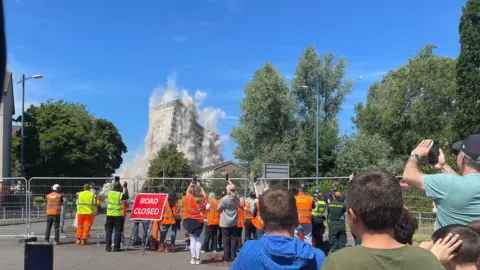 BBC
BBCTwo well-known Glasgow tower blocks have been blown up in a planned demolition.
Numbers 305 and 341 Caledonia Road in the Gorbals were brought down to make way for new housing.
Owners New Gorbals Housing Association (NGHA) will replace the high-rise flats with more than 100 new social rent homes.
The explosion took place with a large exclusion zone set up including the nearby Southern Necropolis cemetery and the Gorbals Rose Garden.
The Caledonia Road flats were constructed in the 1960s as an answer to slum housing, overcrowding and disease.
Glasgow struggled after World War Two and the Gorbals area became known as one of Europe's worst slums.
About 40,000 people lived in deteriorating tenement housing.
 Google
Google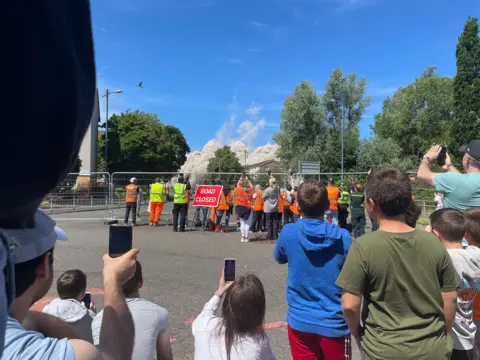
By the time the 1960s arrived, high rise flats were one solution to clear the accommodation and build new homes.
These concrete blocks were often criticized for being poorly designed, damp, and failing to improve community life, although many local people spent happy lives in these flats before they started being rehoused in 2021.
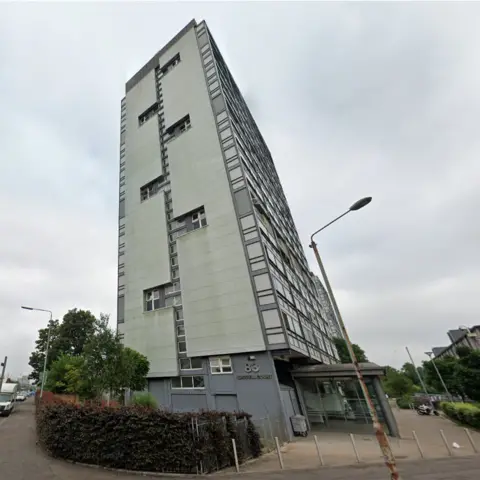 Google
GoogleMany were eventually demolished in controlled explosions as part of ongoing regeneration efforts.
The spectacle of collapsing Gorbals tower blocks has attracted attention over the years.
Towers in Sandiefield Road came down in 2013, with Norfolk Court's flats taken down in 2016.
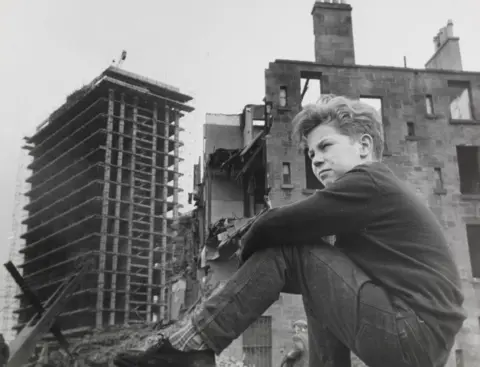 Getty Images
Getty ImagesThe Stirlingfauld Place towers were blown down in 2008.
The large Queen Elizabeth Square towers came down in September 1993, ending in tragedy.
Sixty-one-year-old Helen Tinney died after being struck by debris as she watched the demolition.
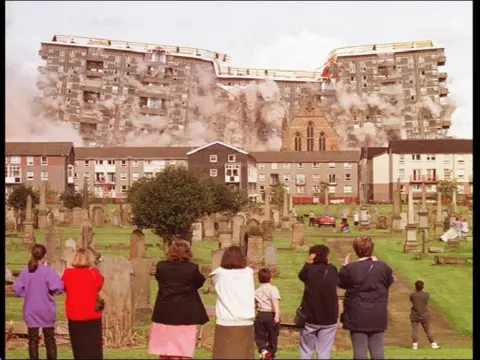 PA Media
PA MediaThe future of the two Caledonia Road had been sealed by the costs involved in bringing dangerous cladding up to acceptable safety standards.
With these two blocks having come down, just one tower remains, the neighbouring Waddell Court.
The controlled blow down was managed by contractors Dem-Master.
The company had been liaising with other local residents on the arrangements for the demolition. About 850 households were evacuated from the surrounding area before it went ahead.
The exclusion zone allowed people to observe from a safe distance and people were warned to expect a loud and dusty process.
Dem-Master had been preparing the towers for several months - stripping the buildings and making sure viable materials can be reused.
It said that it had worked with the housing association to save tonnes of material from going to landfill.
